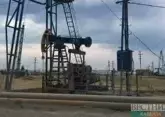Iran’s central bank has ceased issuing permits and licenses for new private banks or commercial lenders, after the collapse of several major institutions froze the savings of hundreds of thousands of depositors and helped fuel anti-government protests. As Bloomberg writes in an article "Iran Halts Private Lender Permits After Crisis Fueled Protests", leading commercial banks and so-called credit institutions or funds -- whose high interest rates allowed them to expand rapidly over the past 15 years -- have shut or received government bailouts, and the crisis first sparked protests in the middle of last year. The lenders were again a focus of anger as demonstrations swept through Iranian cities from late December in the biggest challenge to Iran’s clerical system in nearly a decade.
“I’ve instructed the central bank not to issue any permits to any new private banks,” President Hassan Rouhani said late on Monday in his first major live television appearance since the protests that erupted on Dec. 28. “We’re determined to solve the problem facing depositors at financial credit institutions, which has affected two to three million families,” he said, blaming his predecessor for allowing the unchecked spread of the unregulated lenders.

The demonstrations targeted Iran’s political and clerical establishment. Some 25 people were killed and about 1,000 arrested, according to Iran’s judiciary. A reformist lawmaker, Mahmoud Sadeghi, said that more than three times that number have been detained. In several towns, banks and credit institutions were attacked by protesters. The unrest has revived concerns over how a parallel financial industry was able to thrive without oversight and regulation.
Those who face losing their life savings have also run into an unresponsive state. “People have complained to parliament, to the courts, to the prosecutor’s offices, they’ve done everything they can but still can’t get anywhere,” said Majid, an office worker, who requested his full name be withheld because of the sensitivity of speaking with foreign media in Iran.
About a third of Majid’s $170,000 fund has been returned to him, but he counts himself luckier than many other victims of the financial scandal. “At least I have a job,” he said. “But I know many people who were relying on that interest to provide their only income.”

Last November, Iran’s central bank chief Valiollah Seif described the way credit institutions had operated as a sort of pyramid scheme, saying in an interview with state television that the institutions would pay unsustainable interest rates -- sometimes as high as 89 percent -- using money acquired from new depositors.
The credit institutions mushroomed under Rouhani’s populist predecessor, Mahmoud Ahmadinejad. During his eight years in office, tensions with the West over Iran’s nuclear program peaked and so did international sanctions against the nation, which restricted foreign investment and starved a stumbling economy of financing.
At that time, the lenders appeared to offer “an attractive market and people invested in it,” said Ali Kherad, an analyst at Tehran-based Behgozin Brokerage Co. “There were few other businesses in Iran as profitable.”
The International Monetary Fund said in a report last month that the credit institutions as well as Iran’s banks -- which had been weakened by years of sanctions and competition from unlicensed financial institutions -- were in need of “urgent restructuring and recapitalization.”










